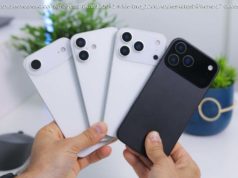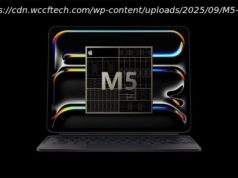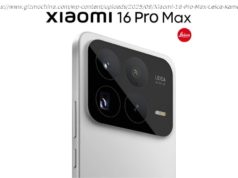Sony’s current flagship smartphone is the Xperia XZ2. It costs $800, and it’s quite comparable to Samsung’s Galaxy S9 in many ways. Does that mean you should drop your hard-earned money on it? It’s a tough question, as the XZ2 checks off a lot of boxes. We find the answer in our review.
After half a decade of the same design philosophy for its Xperia smartphones, Sony is finally changing things up. It starts with the cream of the crop, the Sony Xperia XZ2, which features a design motif the company calls “Ambient Flow.” It’s meant to emphasize curves and ergonomics — a stark contrast from the angular designs of Sony’s previous phones.
The Xperia XZ2 checks off a lot of boxes. It has fantastic performance, good battery life, and its camera is more than capable. But it’s held back by a few software bugs, and its new design language needs to go back to the drawing board for a little more refinement.
The bezel-less trend — where the edges surrounding a smartphone’s screen are minimized — kicked off more than a year ago, but Sony apparently just noticed. It has finally trimmed down those edges on the Xperia XZ2, but they’re still not as slim as most of the competition. Even the OnePlus 6, which is $270 cheaper, has thinner bezels than the XZ2. The front of the phone is a marked improvement over Sony’s previous devices, but it still manages to look a tad dated among the rest of the smartphone market.
Thankfully, Sony goes against the grain with dual front-facing stereo speakers, an uncommon sight among flagship phones. The earpiece doubles as a speaker at the top, and the second speaker is hardly noticeable, sitting at the very bottom edge below a Sony logo. They get loud enough to hear in the busy outdoors, but the audio quality is average. Nothing pops, and bass is virtually nonexistent. We’ve heard better from the likes of the LG G7 ThinQ, and the HTC U12 Plus.
It’s a 5.7-inch LCD screen on the front, with a 2,160 x 1,080 pixel resolution. The screen supports HDR content, and Sony’s X-Reality for mobile engine can also upscale standard content to HDR. We can’t deny that videos look crisp and colorful, but when you turn this auto-upscaling feature off, the difference is negligible.
Blacks aren’t as deep as you’d find on an OLED panel, but the screen gets bright enough to see outdoors. It’s tough to find any problems with the screen here, and we think almost everyone will be plenty satisfied. The Xperia XZ2’s display is protected by Gorilla Glass 5, which is also on the back of the phone.
A USB Type-C charging port sits at the bottom, the SIM tray is at the top, and there’s no headphone jack. All the buttons are on the right edge: There’s a volume rocker at the top, which is a tad too high to reach, a power button that’s a little too centered, and a shutter button at the bottom, which you can use in landscape mode to snap some photos. We found ourselves often shuffling the phone in our hands to be able to reach some of these buttons, a problem that extends to the fingerprint sensor on the back of the phone.
The back of the XZ2 is all glass like most smartphones these days, and it looks fantastic. The edges are thinner than the center, so the phone elegantly curves in your palm. The flash, camera, and fingerprint sensor placement are symmetrical, making the back of the phone look incredibly futuristic, perhaps even robotic. It is a fingerprint magnet, sadly, and it will easily slide off any surface — it’s that slippery.
Our main problem — and this may be limited to people with large hands — is that the single-lens camera is exactly where the fingerprint sensor should be. The sensor is too low, and we constantly placed our finger on the camera lens to try and unlock the phone. It’s tough to get used to the lower fingerprint sensor, because it feels unnatural. We gave it to a few other co-workers, with varying palm sizes, and they too said the fingerprint sensor was far too low.
The Xperia XZ2 also feels really chunky, and while it is ergonomic in the hand with its curved back, it’s a little heavy (198 grams). It does feel like a premium, expensive phone, but we’re not sure why it needs to be 11.1mm thick, especially since it only has a 3,180mAh battery. The Huawei P20 Pro has a 4,000mAh battery, and it’s only 7.8mm thin. The thickness and weight, paired with the slightly dated front design, makes us want to put this phone down back on the table.
We recommend heading to a store to check out how the Xperia XZ2 feels in your hand, since it’s such a subjective experience. You may find you like the button placements better than we do.
On a more positive note, we love the Ash Pink color option of the XZ2, and you can also choose from Deep Green, Liquid Black, and Liquid Silver. The XZ2 looks good, we just have problems with the position of some buttons and the fingerprint sensor, and the phone is a little too chunky for our tastes.
We’ve used quite a few phones with the Snapdragon 845 — the latest chipset from Qualcomm — and even though the Xperia XZ2 uses the same processor with 4GB of RAM, it somehow reacts much quicker. Apps open almost immediately, scrolling is fluid, and games like PlayerUnknown’s Battlegrounds: Mobile and Transformers: Forged to Fight run without any issues whatsoever.
Here are a few benchmark results:
The AnTuTu score is a little lower than phones running the same processor, such as the Galaxy S9, which scored 261,876, and the HTC U12 Plus, which scored 250,938. Benchmark scores don’t reflect real-world performance, though, and we found the Xperia to be slightly faster than its peers. Either way, you won’t have any trouble running all sorts of tasks on this phone.
While performance may be stellar, user experience isn’t. The Xperia XZ2 runs Android 8.0 Oreo, but Sony has its own theme layered on top. Some parts of the user interface look really dated, but we were more annoyed at the amount of app crashes we encountered. In everyday usage, a few apps would just crash and disappear from the Recents menu. We received two software updates (we asked Sony what they were for and got no response), which seemed to help, as we haven’t seen as many crashes as before. Still, the occasional one does pop up, which is worrisome.
There are a few Sony apps installed, including the 3D Creator app that lets you create a 3D image of a real-life object or face. It’s a little wonky, but the results are surprisingly decent. You can even 3D print your virtual image straight from your phone. Still, it’s a feature we’d never really use outside of trying it out once.
One of the highlights — according to Sony — of using the Xperia XZ2 is the Dynamic Vibration System. Sony has essentially increased the size of the vibration motor — the haptics do feel pretty great — but vibrations now are synced with audio from videos and music.
What does that mean? When you play a YouTube video and increase or decrease the volume, you’ll see an option to turn on Sony Dynamic Vibration, which allows you to choose a level of intensity. As the video plays, you’ll feel the phone vibrate during certain parts; like if someone throws a punch, you’ll feel a vibration from the phone to make things feel a little more immersive.
We honestly do not feel any more immersive with this feature on. It’s absolutely useless with music, because it feels like the phone is just constantly vibrating, and while the algorithm does a good job of figuring out moments to offer haptic feedback with video, the actual vibration does nothing for us. It’s a feature we immediately turned off after trying it out for a day.
Unlike most smartphones these days, there’s no dual-camera setup on the back of the XZ2 — you’ll have to wait for the XZ2 Premium for that. Still, the 19-megapixel lens is quite capable. Photos have good detail with accurate colors, though we think the HDR feature could be a little more effective. It’s a little hit or miss — sometimes photos are well-exposed, and other times the camera tends to overexpose.
In mid- to low-light photos, detail starts to take a hit, but the results are still decent. Grain creeps in, but it’s not as noticeable as on some other phones. You may end up with a few blurry and fuzzy photos here, which means you’ll have to retake some photos.






